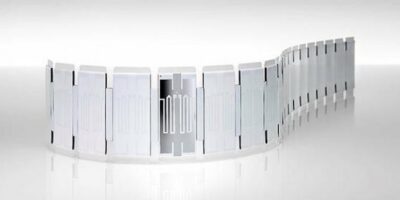A family of four high-efficiency, low-quiescent-current (IQ) buck-boost converters that feature tiny packaging with minimal external components for a small solution size is now available from Texas Instruments (TI).
The integrated TPS63802, TPS63805, TPS63806 and TPS63810 DC/DC non-inverting buck-boost converters offer wide input and output voltage ranges that scale to support multiple battery-driven applications, helping engineers simplify and accelerate their designs.
Each of the devices automatically selects buck, buck-boost or boost mode according to the operating conditions. Their complete solution size of 19.5 square mm to square mm 25 is a result of compact packaging, an advanced control topology requiring few external multilayer ceramic capacitors, and tiny 0.47-microH inductors.
The devices offer a 1.3-V to 5.5-V input and 1.8-V to 5.2-V output voltage range, to help engineers speed their designs and encourages reuse across multiple applications.
These DC/DC converters are the latest addition to TI’s low-IQ power-management portfolio, providing low 11- to 15-microA IQ for light-load efficiency while minimising power losses and extending run times in battery-driven applications such as portable electronic point-of-sale terminals, grid infrastructure metering devices, wireless sensors and handheld electronic devices.
The TPS63802 is a 2-A buck-boost converter with low 11-microA IQ consumption suitable for pulsed-load applications such as industrial Internet of Things devices. The TPS63805 is a 2-A buck-boost converter with a 22-microF output capacitor and 0.47-microH inductor resulting in a small solution size of 19.5 mm squared that meets the requirements of handheld industrial and personal electronics applications.
The new series also includes the TPS63806, a 2.5-A buck-boost converter with a focus on improved load-step regulation for applications with an aggressive load profile that require tight regulation, such as time-of-flight sensors in smartphones, cameras or augmented reality devices. And the
TPS63810 is a 2.5-A buck-boost converter with I2C interface for dynamic voltage scaling through either a two-wire interface or the VSEL pin, enabling the device to serve as a pre-regulator or voltage envelope tracker for systems found in smartphones, wireless hearing aids or headphones.







